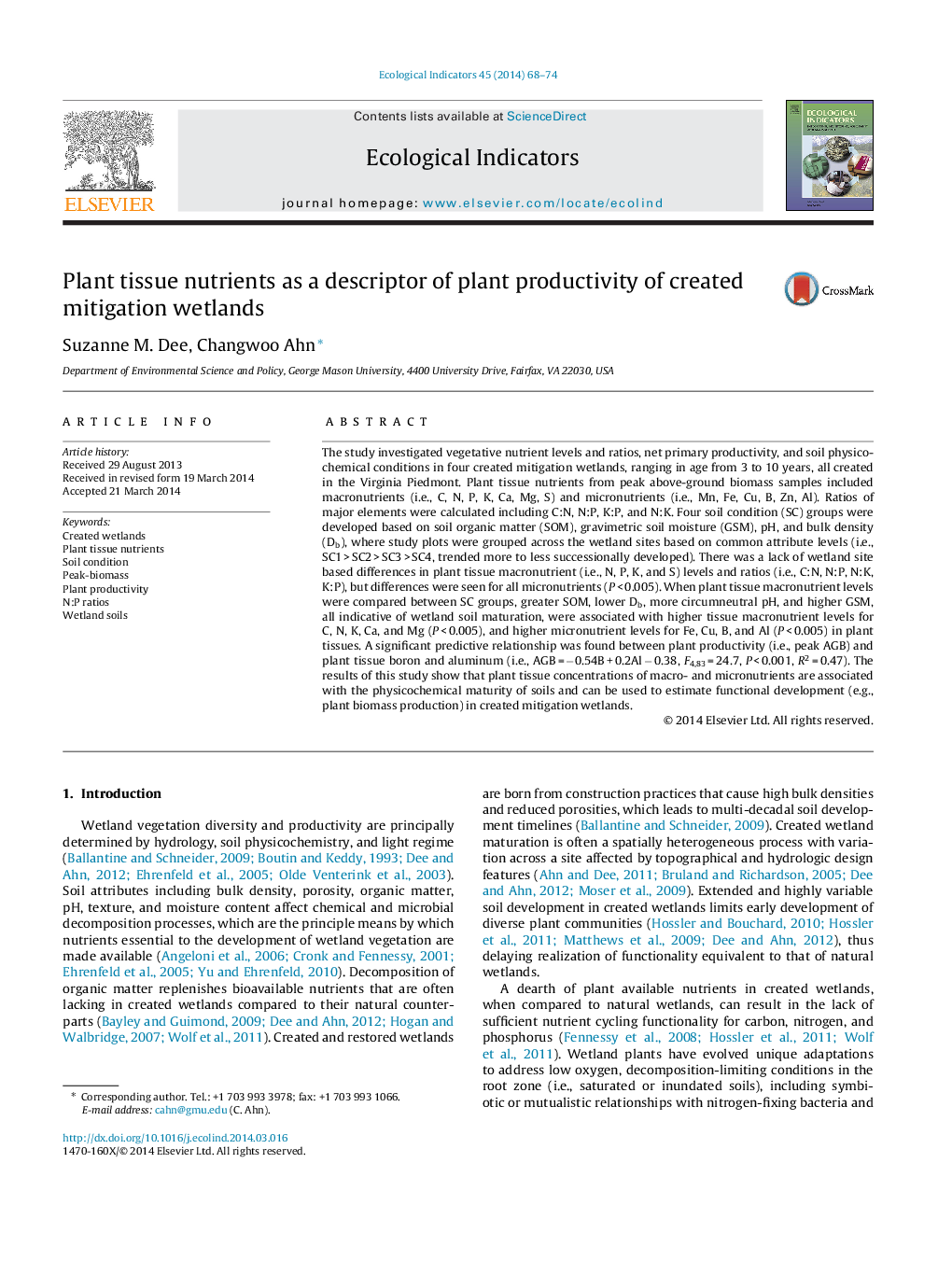| Article ID | Journal | Published Year | Pages | File Type |
|---|---|---|---|---|
| 4373046 | Ecological Indicators | 2014 | 7 Pages |
Abstract
The study investigated vegetative nutrient levels and ratios, net primary productivity, and soil physicochemical conditions in four created mitigation wetlands, ranging in age from 3 to 10 years, all created in the Virginia Piedmont. Plant tissue nutrients from peak above-ground biomass samples included macronutrients (i.e., C, N, P, K, Ca, Mg, S) and micronutrients (i.e., Mn, Fe, Cu, B, Zn, Al). Ratios of major elements were calculated including C:N, N:P, K:P, and N:K. Four soil condition (SC) groups were developed based on soil organic matter (SOM), gravimetric soil moisture (GSM), pH, and bulk density (Db), where study plots were grouped across the wetland sites based on common attribute levels (i.e., SC1 > SC2 > SC3 > SC4, trended more to less successionally developed). There was a lack of wetland site based differences in plant tissue macronutrient (i.e., N, P, K, and S) levels and ratios (i.e., C:N, N:P, N:K, K:P), but differences were seen for all micronutrients (P < 0.005). When plant tissue macronutrient levels were compared between SC groups, greater SOM, lower Db, more circumneutral pH, and higher GSM, all indicative of wetland soil maturation, were associated with higher tissue macronutrient levels for C, N, K, Ca, and Mg (P < 0.005), and higher micronutrient levels for Fe, Cu, B, and Al (P < 0.005) in plant tissues. A significant predictive relationship was found between plant productivity (i.e., peak AGB) and plant tissue boron and aluminum (i.e., AGB = â0.54B + 0.2Al â 0.38, F4,83 = 24.7, P < 0.001, R2 = 0.47). The results of this study show that plant tissue concentrations of macro- and micronutrients are associated with the physicochemical maturity of soils and can be used to estimate functional development (e.g., plant biomass production) in created mitigation wetlands.
Related Topics
Life Sciences
Agricultural and Biological Sciences
Ecology, Evolution, Behavior and Systematics
Authors
Suzanne M. Dee, Changwoo Ahn,
